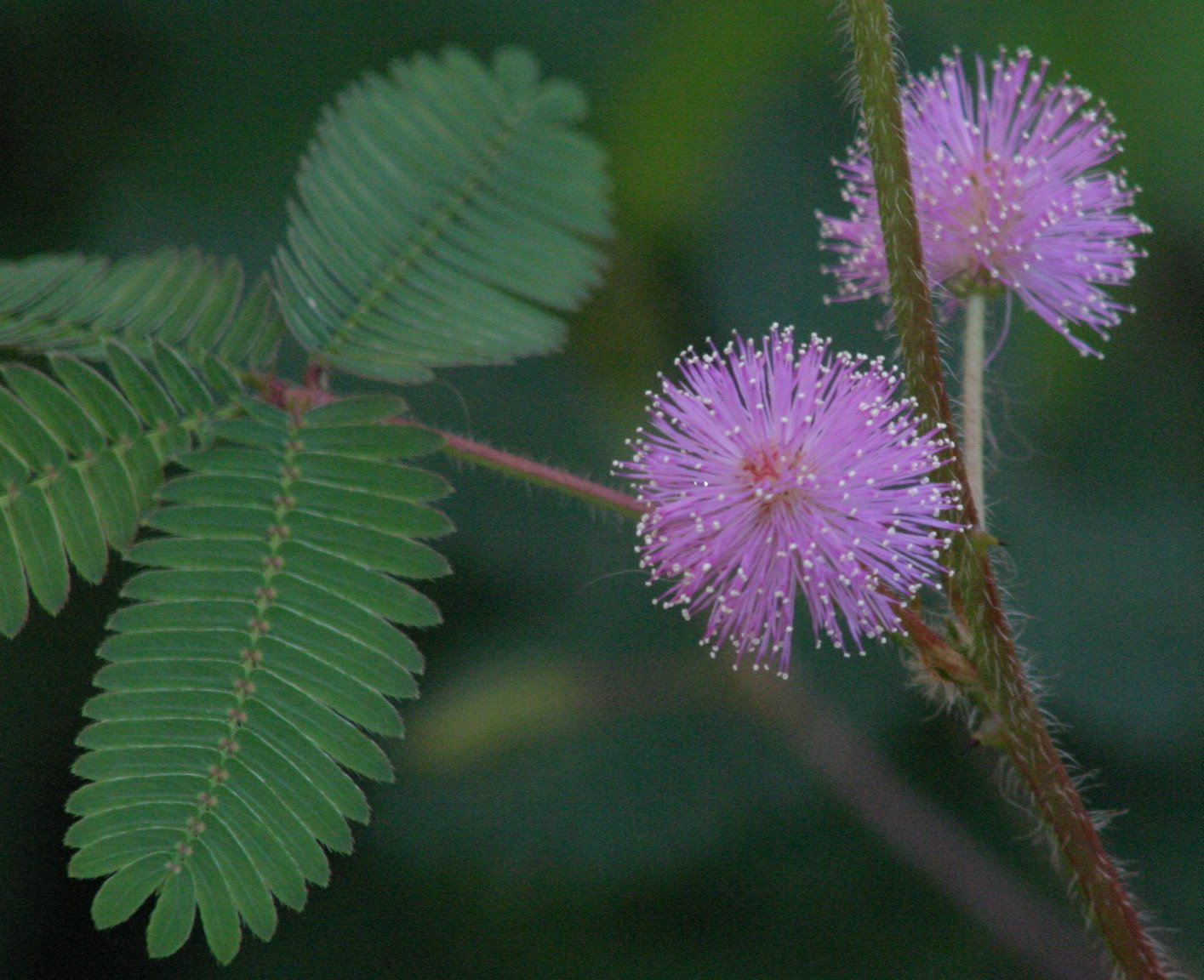Flower EncyclopediaENTER THE WORLD OF FLOWERS |
Other News
Mimosa pudica
Category: Decorative leaf
17 Aug : 12:30
To view pictures click on them






 Mimosa bushes kind of Legume Family (Fabaceae), subfamily Mimosaceae. Originates from South America, where it can reach up to 1 m in height. Grown in pots does not exceed 40-50 cm usually have characteristic fine, deeply cut leaves and spiny stems. It flowers from June to late autumn under favorable conditions. The colors look like small balls and pink or red in color. The plant is famous for its great sensitivity even in the best light touch.
Mimosa bushes kind of Legume Family (Fabaceae), subfamily Mimosaceae. Originates from South America, where it can reach up to 1 m in height. Grown in pots does not exceed 40-50 cm usually have characteristic fine, deeply cut leaves and spiny stems. It flowers from June to late autumn under favorable conditions. The colors look like small balls and pink or red in color. The plant is famous for its great sensitivity even in the best light touch.This is a bushy plant from Brazil, India and Ecuador, which belongs to the field pea plants sem.Bobovi.
The plant has spiny stems and fine, deeply cut leaves. The colors of mimosa are formed in small topchentsa, which are usually pink or purple.
The plant is very sensitive to the touch and leaves his lap slowly from the tip of the leaf to the base, even in the breath of wind.
Species of the genus Mimosa:
* Mimosa aculeaticarpa
* Mimosa arenosa
* Mimosa asperata
* Mimosa borealis
* Mimosa casta
* Mimosa ceratonia
* Mimosa diplotricha
* Mimosa dysocarpa
* Mimosa dysocarpa
* Mimosa emoryana
* Mimosa grahamii
* Mimosa grahamii
* Mimosa hystricina
* Mimosa latidens
* Mimosa laxiflora
* Mimosa malacophylla
* Mimosa microphylla
* Mimosa nuttallii
* Mimosa pellita
* Mimosa pigra
* Mimosa pudica - Mimosa pudica
* Mimosa quadrivalvis
* Mimosa hystricina
* Mimosa roemeriana
* Mimosa rupertiana
* Mimosa schomburgkii
* Mimosa strigillosa
* Mimosa spegazzini
* Mimosa tenuiflora
* Mimosa texana
* Mimosa turneri
* Mimosa verrucosa
Most - successfully grown as an annual plant M. pudica. Soil should be equal amounts of clay, peat, rotten leaves and sand. When it grafting, clod of earth around the roots should remain intact. After transplanting, the plant is stored in a shady and damp place. Generally difficult prezimuva.
M. speggazzinii formed low shrub, which can exist for several years. It is grown in the same way as M. Pudica, except that in the fall can be moved to the winter garden or greenhouse, rather than being discarded. The minimum temperature should be 13 degrees and the soil must be well dry before watering. In early March, the plant should be crop in half and be sprayed often as once again begin to grow rapidly. Transplant in a pot one size larger than this.
Propagation: M. pudica reproduced at - well from seed sown in March in the soil of equal parts peat moss and sand. Used pots with a height of 5 cm filled halfway with crushed clay, covered with small leaves or roots. Fill saksiykite with soil and place the three seeds in vsyaka.Napoete soil, then arrange saksiykite close to each other, for example in a cardboard box and scattered around damp moss. Cover the container with the glass and put it in the winter garden or greenhouse, at least 13 degrees.
M.speggazzinii and other perennial, can be reproduced through cuttings taken proletta.Otryazvat are side shoots with a length of 5 cm abolished several of the lower leaves, and the bottom edge is slick with a sharp knife. Cuttings are placed in a box to form roots, if the temperature is min.27 degrees.
FAQ - Frequently error in the cultivation of mimosa is its prepolivane. It is not watered before the soil to dry completely, otherwise the roots easily rot.
Category: Decorative leaf
Comments are turned off for this item0
| mimosaceae fabaceae |
You must be logged in to make comments on this site - please log in, or if you are not registered click here to signup























































